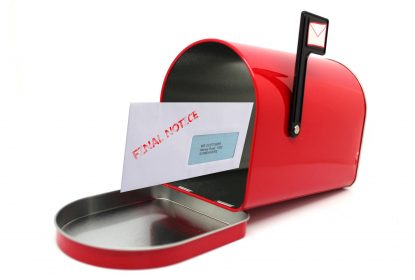
Of all the credit management tools in your toolbox the one that should have the most teeth is your Final Demand Notice. As its name implies this is the final letter you will be sending your customer and they should view it as their final opportunity to repay their overdue account without risk of further consequences. The only way it has teeth though is if it is specific and forceful enough of a motivator for your customer to feel compelled to pay. With that said, you would not believe how many accounts receivable departments will send multiple “Final Demands” to the same customer in anticipation that maybe their customer will take them seriously this time around.
In a recent conversation with an accounts receivable professional the topic of Final Demand notices came up. They were contemplating sending a customer to collection but wanted to send a Final Demand first, this of course was not the actual Final Demand. That occurred back in 2019, a full two years before they were going to send this one. This was just one of the many examples of toothless Final Demand attempts that some companies employ, and it is not uncommon, nor is it effective! A Final Demand Notice should be sent to the past due customer in a timely manner, ideally at the 90-120 day stage depending on your internal credit policy.
The above situation plays out in companies of all shapes and sizes, their Final Demand processes suffer one of two faults. Either the amount of time given to their customer is too long and not followed up on in a timely manner or there are just no consequences for the customer ignoring the Final Demand. These letters need to create urgency to motivate an overdue customer to pay within the given timeframe, that is why putting a finite amount of time and sticking to it is critical for a Final Demand. Usually, we recommend a period between 7 and 10 days from the issue of the letter. This gives your customer ample time to reach out to you and arrange repayment of their account. If they choose to ignore the Final Demand it is up to you to make sure the second part of the Final Demand, the consequences are in place.
The teeth of the final demand letter are the consequences that are put in place if the Final Demand is not met. They could be refusing to extend that customer further credit, sending that customer to collection, or beginning legal action to recoup the money owed to you. Make sure that you let your customer know what happens if they do not pay somewhere in the body of your Final Demand letter. If they fail to acknowledge within the time frame do exactly what your Final Demand said you would.
The finality of Final Demand needs to be just that, the last chance for your customer to repay their overdue account without further penalty. By making sure there is a specific deadline they must respond by and following through with consequences if they do not, you create an effective Final Demand letter that can bolster your overall credit management process. That is why the Final Demand letter is one of the best tools in your toolbox, but it is only as effective as you choose to use it.